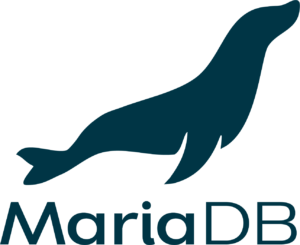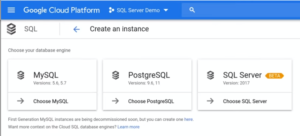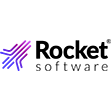
Database Migrations Shift Into High Gear

(hanss/Shutterstock)
Google Cloud today announced Database Migration Service (DMS), a new service for migrating customers’ MySQL, PostgreSQL, and SQL Server relational databases to its hosted database service, called Cloud SQL. Meanwhile, MariaDB announced that it has picked off an Oracle database customer, which is now running the MariaDB database on Google Cloud.
Cloud SQL is a fully managed service for hosting MySQL, PostgreSQL, and SQL Server databases that is backed by 24/7-technical support from Google Cloud’s site reliability engineer (SRE) team, who take responsibility for guaranteeing the security, reliability, and scalability of its customers’ databases.
Once users complete the initial setup of their hosted Cloud SQL instances (including number of CPUs, RAM, and storage amount and type), then Google steps in to automate common and mundane tasks, such as running backups, applying patches, and adding storage capacity, thereby freeing developers and operations teams to focus on other tasks.
With the new DMS offering, Google Cloud is hoping to streamline the process of moving customers’ databases into its cloud. Google says its new offering handles all aspects of the migration, including: preparing the database to move; configuring network security; validating the setup; executing the migration; and monitoring the move.
Google also handles all the compute and storage resources needed behind the scenes to complete the migration, eliminating the need for users to pay attention to that. The company says that it automatically scales resources needed for the move, which minimizes downtime associated with the migration.
But here’s the best part: Google isn’t charging clients anything for “native like-to-like migrations.” That means no extra charge for moving a MySQL database running on on-prem or on another public cloud into a MySQL database running under Cloud SQL. Moving a PostgreSQL or SQL Server database to MySQL under Cloud SQL, however, would entail a fee. And running the database on Google Cloud, of course, is not free.
Currently, MySQL is the only database fully supported for DMS. Support for PostgreSQL is in a limited preview, while support for SQL Server is in beta.
Migrating operational databases to the cloud is a core element of many companies’ digital transformation strategies, according to Andi Gutmans, the general manager and vice president of engineering for databases at Google Cloud.
“Database migration is a complex process for most businesses,” the co-creator of PHP stated in a press release. “With Database Migration Service, we’re delivering a simplified and highly compatible product experience so that, no matter where our customers are starting from, they have an easy, and secure way to migrate their databases to Cloud SQL.”
In addition to sucking up on-prem workloads, Google Cloud views DMS as a way to pilfer MySQL, SQL Server, and PostgreSQL customers from its larger cloud competitors, AWS and Microsoft Azure. These customers are ripe for the picking, says John Santaferraro, Research Director for Data and Analytics at Enterprise Management Associates (EMA).
 “We have seen an acceleration in migrations across the board, including a wave of customers leaving AWS for other cloud service providers,” Santaferraro says in Google Cloud’s press release.
“We have seen an acceleration in migrations across the board, including a wave of customers leaving AWS for other cloud service providers,” Santaferraro says in Google Cloud’s press release.
Meanwhile, one of Google Cloud’s partners is going after even bigger fish: Oracle’s eponymous database.
Earlier this week, MariaDB announced that it has convinced Financial Network, Inc. (FNI), a St. Louis, Missouri-based company that has been providing loan-origination services for 30 years, to migrate data from an on-prem Oracle relational database management system to the MariaDB RDBMS.
FNI is running atop SkySQL, the database as a service (DbaaS) offering that MariaDB announced earlier this year (and which was the original name of the company that became MariaDB). Specifically, FNI is replacing the Oracle database with SkySQL running atop the Google Cloud, according to MariaDB.
Bryan Bancroft, the lead database administrator at FNI, credits MariaDB with being “a true collaborative partner” in the migration.
“With SkySQL, we don’t have to bother with containers or managing the database; that’s left to the database professionals at MariaDB,” Bancroft states in a press release. “Moving to MariaDB from Oracle was a key strategic business decision for us and has ultimately saved us up to 80% in database costs – allowing us to reinvest the savings into delivering new, critical solutions for our customers.”
The move gives FNI the option of adding analytical capabilities to its SkySQL database. While MariaDB’s default configuration is as a traditional row-oriented database, the company offers a column-store as an option, thereby giving customers the capability to process transactional and analytical workloads in the same database. With
MariaDB, of course, is a fork of MySQL, and so MariaDB is highly compatible with MySQL workloads. MySQL creator Michael “Monty” Widenius created MariaDB after Oracle bought Sun Microsystems, which had acquired Widenius’ Swedish company, MySQL AB, for $1 billion in 2008.
Related Items:
Cloud Misconfigurations Spur DB ‘Repatriation’
Cloud Now Default Platform for Databases, Gartner Says
As Cloud Grows, Is Resistance to AWS Futile?







































